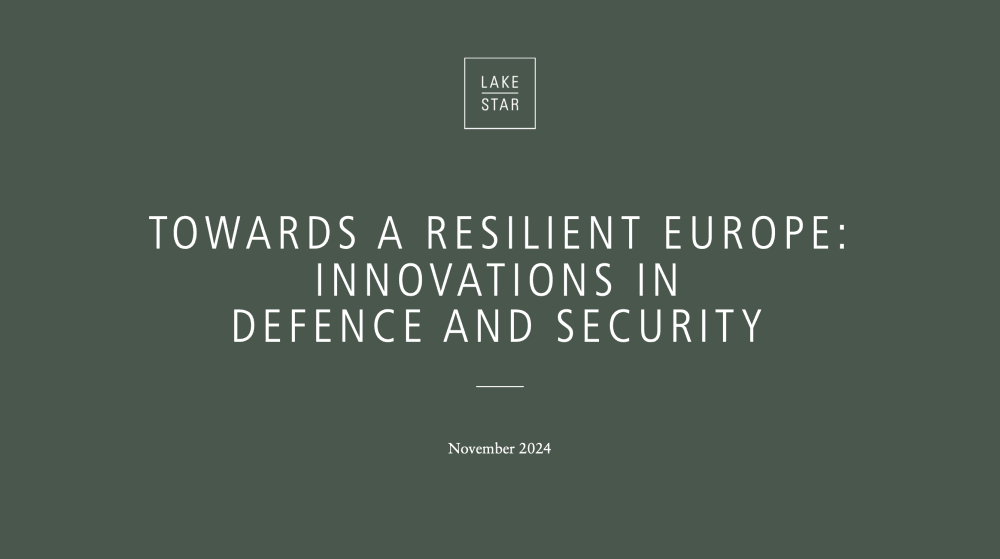Insights|
Growth as a generational investment opportunity
We are in the midst of an uncertain market, but we still have our Growth Stage funds to nurture and deploy. So the question we ask ourselves at Lakestar is “is the market turn an opportunity for growth investments or is it a challenge?”

Fortunately, our Growth strategy, which began with our first dedicated fund in 2018, has a strong portfolio composition and an experienced team. They have lived through these cycles before and we welcome their perspectives on our strategy. James Dawson, our public market expert, says: “It’s a very different investing environment this year. The inflation genie came out of the bottle for the first time since the early 1980s and investors aren’t used to this.”
He says the “two Vs” are important factors in the markets right now: Volatility and Valuation. “If inflation remains an important theme, we should expect interest rate policy to continue to be important, and for markets to remain more volatile. The valuation impact of higher rates is felt most clearly for growth stocks – the Nasdaq is down 30 per cent while High-growth tech stocks are down about twice that. It has been a tough year for high growth.”
Dawson points out that in the US market, valuations have become more attractive – for SaaS or Consumer internet, for example, their multiples have halved, and “are around 15-20 per cent below their 10-year average. So we’ve seen a big valuation drawdown across the whole of tech and it has been greatest at the highest growth and most unprofitable parts of the sector.”
Of course, we want to know when the situation is likely to change. For clues, we can look at previous cycles. The business cycle usually lasts for around eight years: normally two years of down cycle and six years of up cycle. We are one year into this down cycle.
"The investments made now are likely to exit in better markets."
“With a venture business where we have longerterm time horizons the investments made now are likely to exit in better markets,” says Dawson. That was the case in the last two major Tech downcycles, with many growth investments going on to IPO shortly afterwards, to become multibillion dollar companies – this was the case with Netflix, PayPal and Salesforce all after the dotcom cycle, and LinkedIn, Facebook, and ServiceNow all shortly after the Global Financial Crisis.
It’s a similar situation in the private markets, where Georgia Watson has been investing for ten years. “What we see happening in the public markets is definitely starting to happen in the private markets, albeit with a lag. Because companies were able to raise so much money in the previous two years they have put off going to market at the moment as the markets have deteriorated for them.”
Instead, companies have been taking small extension rounds to shore up their balance sheets and extend their runway, or accepting structure in their new rounds that provide more downside protection to investors.
“When we compare where we are now with the 2000 and 2008 cycles, we don’t expect to see the impact of these down rounds until Q1 next year,” says Watson. As these deals will start to be made in this year’s Q4, “we’re already starting to see the uptick in activity”.
An important factor for our Growth fund is calling the right time for exits. “When you look at the exit and IPO markets broadly, you need a less volatile stock market. So when the bear market for stocks finalises, the IPO market will reinvigorate,” says Dawson. He adds that the current unmatched valuation levels between public and private markets also needs to come closer together.
The current year has proved to be difficult for IPOs, with only one technology IPO in Europe of any size. “I think 2023 is probably going to be similar,” says Dawson. “But in 2024 when these valuation expectationsmarry up a bit more between private and public I think the market will start to respond and then we’ll get back to a more active IPO market.”
However, he adds: “I would expect exit markets to be more volatile than they have been for the last 10 years, which was an unusually long and buoyant cycle.”
"The European market has matured greatly and is still attractive from a valuations perspective"
Watson is optimistic about what is happening in Europe. “The European market has matured greatly and is still attractive from a valuations perspective,” she says. “When I arrived in Europe five years ago I had difficulty finding companies that had funding beyond Series B but since then, the number of unicorns on the continent has tripled to over 300.
“We have put together a hotlist of growth opportunities that we’re very excited about. It’s really about identifying the next category-defining multibillion dollar businesses and we’re already going after them.”
While of course we keep an eye on the markets, another important role we have is to manage the expectations of our portfolio companies. “It’s important to stress to portfolio companies that the environment has changed,” says Dawson. “The pathway to profitability is now a critical factor. That wasn’t the case five years ago – then it was all about growth, growth, growth. So some sort of balance around the business model will definitely matter for the IPO market.”
This is why we are in constant dialogue with our portfolio companies about how to prepare, telling them what the markets like and don’t like, and what issues to avoid. That way, when the exit environment improves, companies are ready to seize the opportunity.
So, what do the next six to 12 months hold? Watson detects “a thawing in the fear” that both founders and investors had been feeling lately. “We are aggressively going after the target businesses that we have identified so in Q1, Q2 is when we’ll really start to see activity pick up and we’ll be part of that.”
Dawson is equally optimistic and believes that 2024 will be a better year for the IPO market. “The whole ecosystem around venture and growth investing is much more developed now in Europe, so when this market picks up there will be a more receptive audience for these companies,” he says.
This growth story is therefore set to persist. We have invested heavily in growth – more than €400m in the last four years – but, just as important, we have invested in our team so that we can improve our skillset and be prepared for whatever happens.









